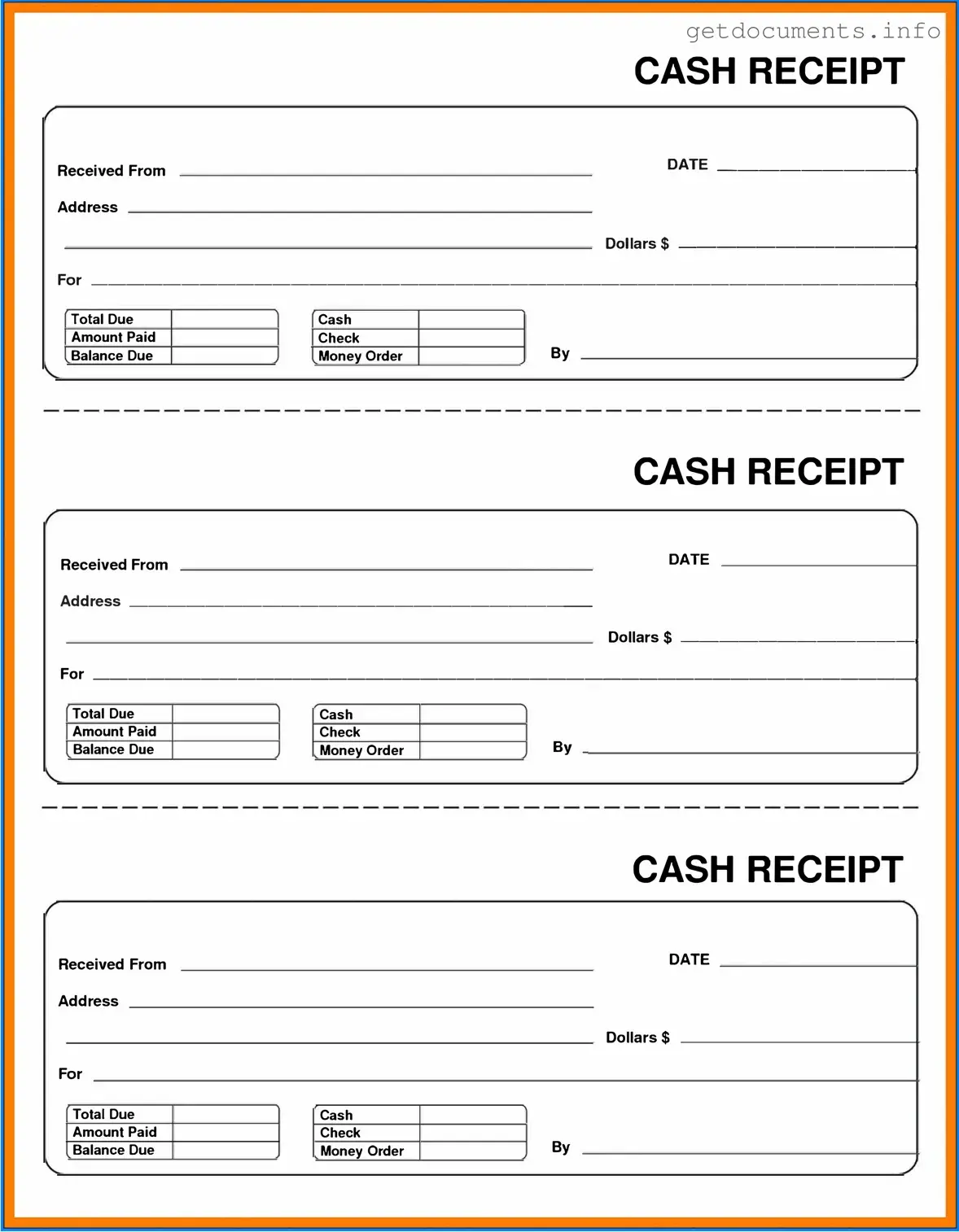The Cash Receipt form plays a crucial role in the financial management of businesses and organizations. This document serves as a record of cash transactions, detailing the amount received, the date of the transaction, and the purpose of the payment. It typically includes fields for the payer's information, such as name and contact details, along with a unique receipt number for tracking purposes. Additionally, the form may specify the method of payment, whether cash, check, or electronic transfer. By providing a structured way to document cash inflows, the Cash Receipt form helps ensure accuracy in accounting records and aids in financial reporting. Furthermore, it serves as a valuable tool for both the payer and the recipient, offering proof of payment and facilitating future reference. Proper use of this form can enhance transparency and accountability in financial dealings.
